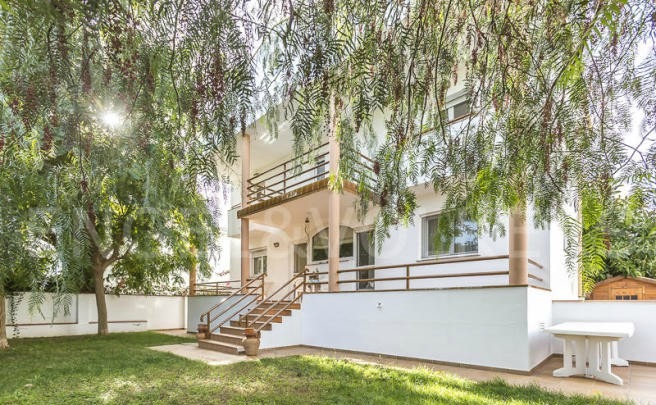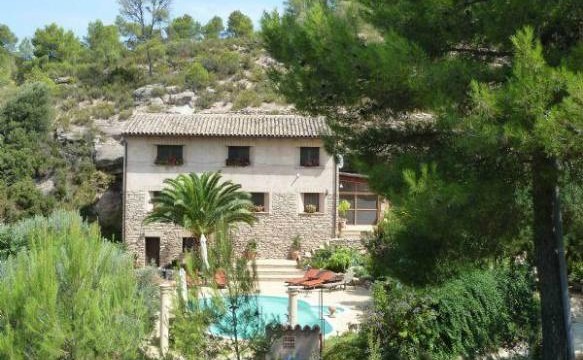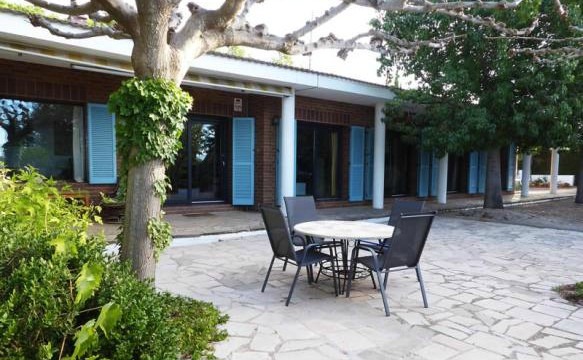The Costa Daurada (Golden Coast) is a busy and well developed stretch of Catalonia’s coastline. Its sandy beaches combine with fabulous resorts and purpose-built holiday attractions. Barcelona begins this costa, and one of the most exciting cities on the planet is a great place to start our trip.
Where exactly is the Costa Daurada? The whole coast lies in the province of Tarragona, which makes up the southern part of the region of Catalonia. It stretches for 216 kilometres of the Mediterranean sea from Barcelona to Alcanar. There at least 20 significant towns and resorts to discover along the way, and dozens of attractive inland villages within striking distance of the seaside. With 786 hectares of beaches there is plenty of room for your towel, even in summer!
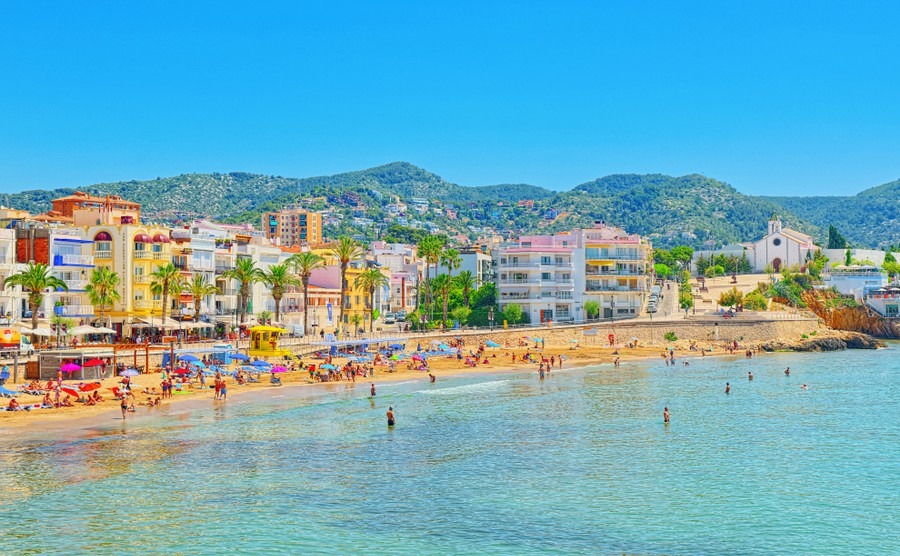
Sitges (Brian Kinney / Shutterstock.com)
Its location means that Catalan is widely spoken, but most people also speak Castilian Spanish. Hence you will also see it spelled as Costa Dorada. The area is blessed with wide beaches of fine sand lapped by clear waters. Almost 90 of the beaches are Blue Flag listed, in recognition of their high standard. The average temperature here is a very agreeable 17°C in January and 32°C in the summer. So join us on a tour of this fabulous stretch of coast.
Discover properties on sale in Costa Daurada.
The area is blessed with wide beaches of fine sand lapped by clear waters. Almost 90 of the beaches are Blue Flag listed in recognition of their high standard.
Find homes in Spain via our property portal.
Sitges
Sitges is just 40 kilometres from Barcelona and is the gateway to the Costa Daurada. It’s one of the best known coastal towns and a tourism hotspot. Its gay-friendly reputation makes it a big draw, but not just to the gay community – the nightlife, dining and beach clubs are superb. Sitges retains an authentic Spanish charm too, and there is plenty to do. It boasts three marinas, a delightful old town, 17 beaches and plenty of restaurants serving “slow food” – locally sourced organic cuisine.
The pleasant climate – it enjoys 300 days of sunshine a year – ensures its status as a year round resort. The calendar is packed with festivities and cultural events. Getting here isn’t a problem either, as Sitges is just 25 kilometres from Barcelona El Prat airport.
Property here is quite pricey compared to other local resorts. Many residents choose to rent in or near the town, so fly-to-let investors can make good returns either from short-term lets to tourists, especially for premium quality accommodation, or long term lets.
This beautiful four-bedroom villa is on the market for €490,000 (£435,000). It has a well tended 332 square metre garden and is a short walk to the town centre and beach.
Cunit
Cunit is about 20 kilometres south of Sitges. The town has 2.5 kilometres of golden beaches, which are protected by breakwaters making them ideal for swimming and water sports. There are relatively few hotels here so most holidaymakers rent apartments or villas. That makes it an excellent place to purchase a property with a view to entering the rental market. Property prices tend to be lower than in more fashionable resorts like Sitges.
Property is affordable here. A budget of little over €100,000 could get you a nice two- or three-bedroom apartment near the beach.
Torredembarra
Torredembarra – home to around 16,000 inhabitants – is not well known to British holidaymakers, despite being a pretty town with a fine castle. It has excellent, generally uncrowded beaches – checkout playa Canyadell – and people from Barcelona have built many second homes over the years. There is beauty away from the beach too. It has plenty of green spaces where people head to relax in the shade, including Els Muntanyas, a wonderful nature reserve straddling the sand dunes. Property is affordable here. A budget of little over €100,000 could get you a nice two- or three-bedroom apartment near the beach.
Why not split the cost and double the fun of owning a holiday home on the Costa Daurada by buying with family or friends? Read our new guide, Buying Abroad with Family.
Tarragona
Drive south of Torredemarra to the capital city of the region. Founded by the Phoenicians, both Romans and Moors conquered it over the centuries and its history is very visible in the old quarter. Ancient Rome is all around, with an amphitheatre, Roman walls, the Pretorium Tower and the palace of Emperor Augustus. The Roman ruins of Tarraco are now part of a UNESCO World Heritage site.
These days a relatively large British community is among its 130,000 population. One reason for that is the handiness of Reus Airport which is a 10 minute drive away. With low cost flights to the UK, some continuing all year, Tarragona has potential as a “eurocommuting” base, where you can live in Spain but commute back to the UK office for a couple of days each week. With the cost of living here a little lower than in most other Spanish towns and cities of similar size, the cost of flights and UK hotels or AirBnbs are soon made up.
You can probably save money and do without a car too, as one of the most pleasant aspects of Tarragona is it feels more like a town than a big city, yet has a terrific infrastructure.
Between Tarragona and Salou is the famous Port Aventura Theme Park, one of the most popular theme parks on the Iberian peninsula. It has five distinct areas, each representing a different area on the globe.
This traditional four-bedroom stone property has a private pool and offers beautiful views of the surrounding countryside. It could be yours for €395,000 (£350,600).
Salou
Next along the coast is Salou, which was once settled by the Greeks and Romans. Today it is one of the most important tourist destinations on the Costa Daurada. With nine beaches and lively nightlife it attracts many British, German and Dutch property buyers. The main beach is ideal for families with small children as the waters are shallow and the sand fine. Salou’s close proximity to Porta Aventura and Reus Airport add to the town’s appeal.
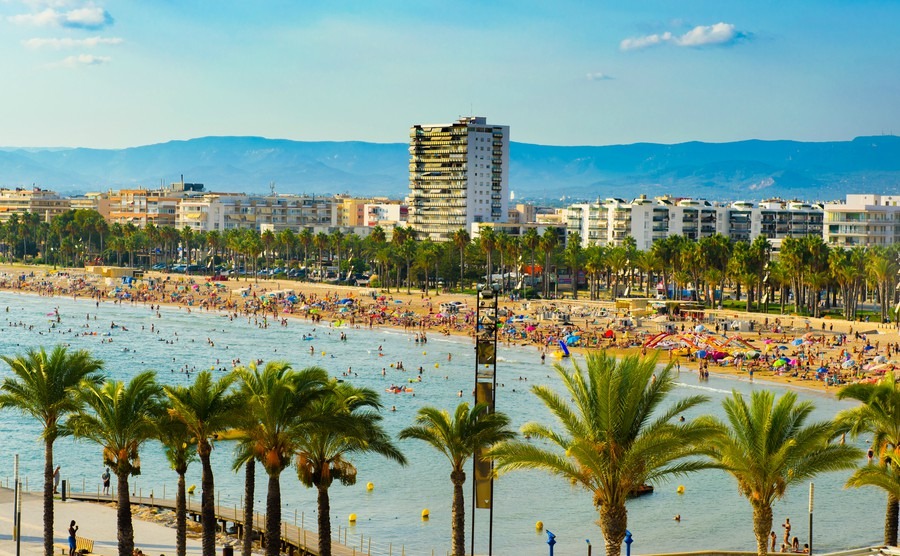
Salou
There is an established British community in and around the town, with many bars and shops that cater to their tastes. Although Salou is popular with the British, about 50% of its visitors are Spanish.
Cambrils
Once a fishing village, today Cambrils’ nine Blue Flag beaches and attractive old town are a major tourist attraction. It has a distinctly upmarket ambience, with six Michelin-starred restaurants sharing the streets with the seaside bars. You can also just grab some grilled sardines, the favourite local dish, from the informal stalls and cafes called chiringuitos. Residents can also enjoy the town’s slightly more sophisticated nightlife, with less flashing lights and loud music than neighbouring Salou.
L’Ametilla de Mar and L’Ampolla
The imposing Castell de Sant Jordi d’Alfama – even its name is imposing! – overlooks the pretty seaside town of L’Ametlla de Mar. This is still a fishing village, with whitewashed houses and lovely beaches. Smaller than both Salou and Cambrils, it offers a more relaxed pace of life.
This is still a fishing village, with whitewashed houses and lovely beaches. Smaller than both Salou and Cambrils, it offers a more relaxed pace of life.
There are lots of nature walks, historic places to visit and an interesting olive route to explore. Close to the popular village and beach of El Perello, L’Ametlla de Mar is perfect for those seeking real Spanish authenticity.
South of El Perello-Mar is L’Ampolla, which lies to the north of the Ebro Delta. It is a typical small coastal town with most amenities and a nature reserve. The Ebro river is important to this part of Catalonia and is a great spot for kayaking, canoeing and bird watching. Look out for the flamingos, glowing pink in the sun that always seems to be shining here.
Wherever you wish to live in Spain, knowing how to negotiate for your property should get you a little more house for your money! Download our guide: How to Negotiate Abroad.
Tortosa
Moving a little inland, as you approach Tortosa you’ll be impressed by the Arab castle of La Suda, standing tall above this pleasant city. The old town straddles the river and the cathedral within is quite lovely. Close to the fish market is a beautiful park, where you will see the locals relaxing and reading in the shade. About 25% of residents come from outside Spain, choosing this charming Catalan city over the crowded coast.
Their decision seems to be vindicated as you stroll along the banks of the river Ebro, or the surrounding countryside. Life here is more traditional than many of the coastal resorts. You might need to learn some Catalan (or Spanish) to integrate but the lifestyle is peaceful away from the bright lights of the coast.
This spacious four-bedroom villa is three kilometres from Tortosa. For €435,000 (£386,100) you could enjoy the panoramic views of the Els Ports mountains from your very own pool terrace, before heading inside to take advantage of the cinema.
Sant Carles de la Rapita
Finally we reach another fishing town, Sant Carles de la Rapita. This now has two marinas, cashing in on the watersports and fishing opportunities of the Ebro Delta. It is renowned for its gastronomy, earning it a reputation as the food capital of the Ebro Delta. Fish is definitely the order of the day around here, and the town is home to an impressive fish market. Visit mid-afternoon to watch the day’s catch being auctioned. There are some lovely beaches near the town too, and thanks to the mild winters you can spend much of the year outside in the sun and fresh air.
Search for properties in all of the areas above on our Spain property portal.


 Property Guides
Property Guides France
France Portugal
Portugal Spain
Spain Italy
Italy USA
USA Ireland
Ireland Greece
Greece Cyprus
Cyprus Australia
Australia New Zealand
New Zealand Canada
Canada Turkey
Turkey UK
UK